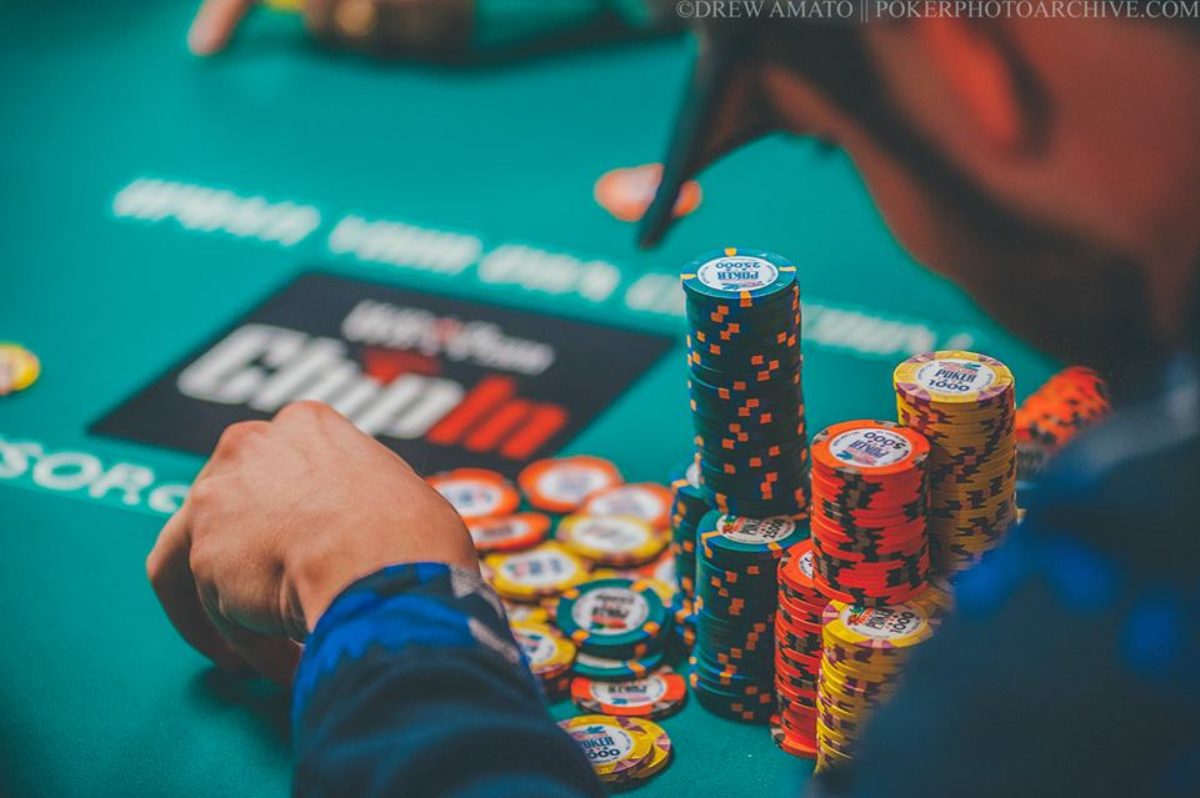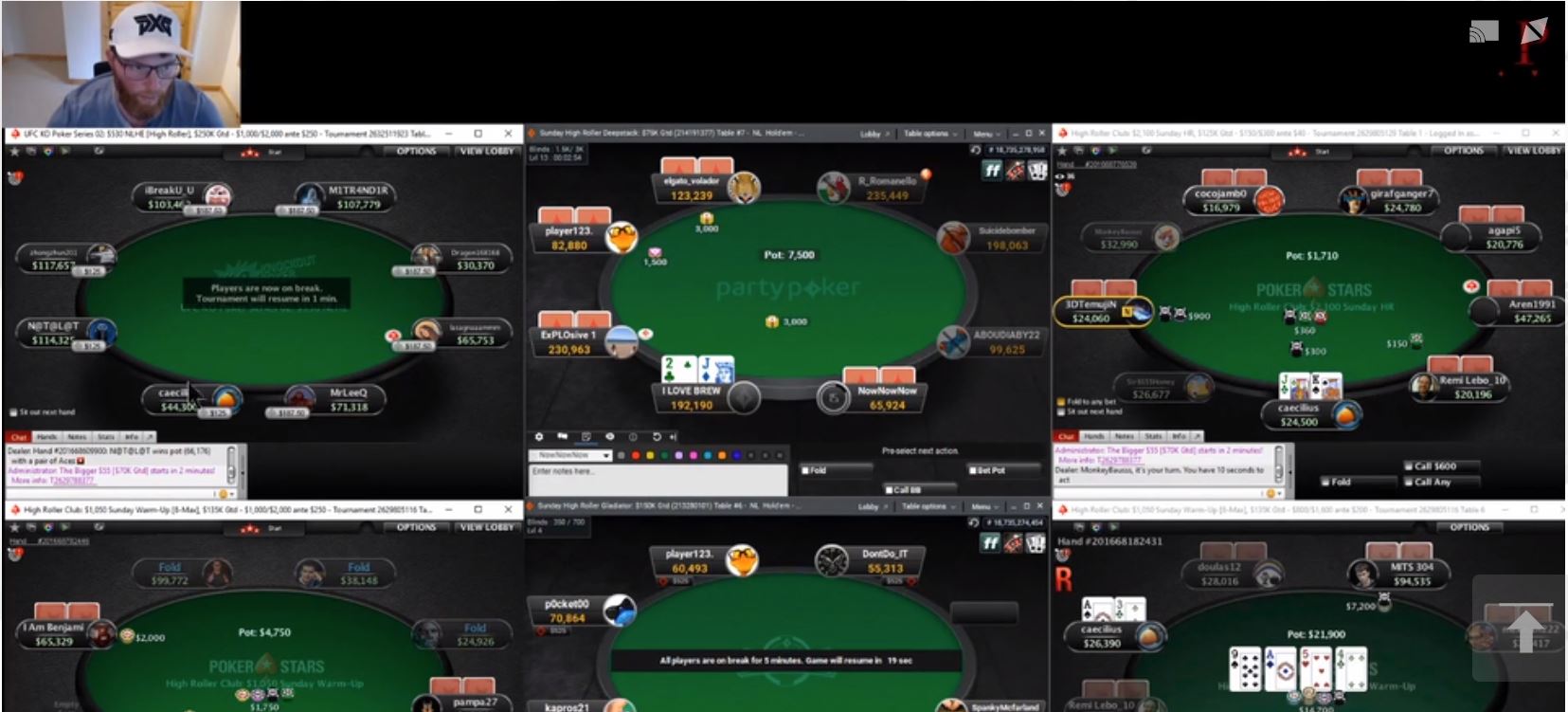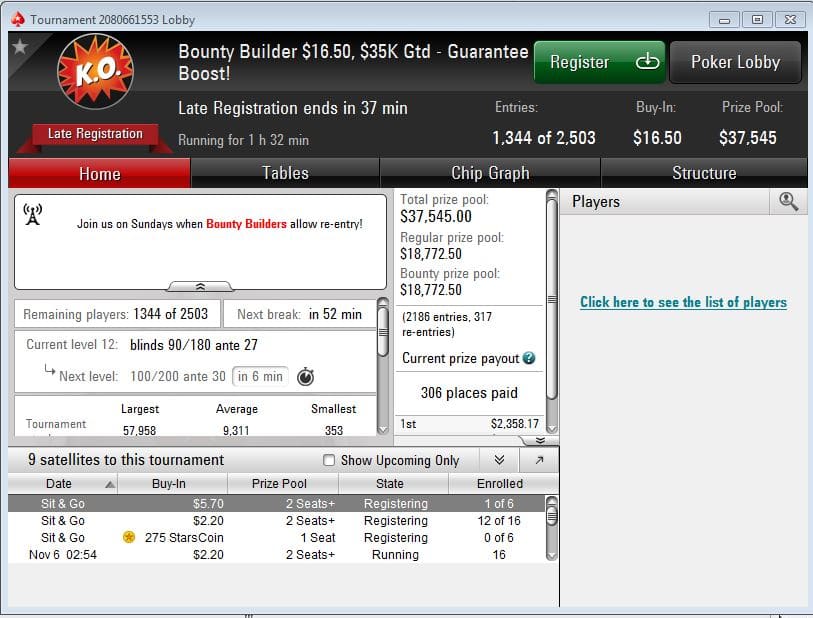Late Stage Poker Tournament Strategy
Tournament strategy for Texas Hold’em differs considerably from cash game strategy, and there are a host of other tips that determine how to play in tourneys. If you ask 5 different people, chances are you’ll get many different answers about the best poker strategies to adopt. During the early stage of the tournament, you can play with quite the same strategy as you would in a cash game. You should utilize position and choose your starting hands carefully. Once you do enter a hand though, play it aggressively. Poker Tournament Tip 1: Steal a Lot, But Don’t Go Overboard. “Open small and often.” This phrase.
(This article is a follow up to 'Bubble Tournament Strategy')
The late stages of a tournament begins when the money bubble bursts, and ends when players reach the final table (or final few tables, if it is a really large tournament). Your play during this stage of the tournament should change drastically, as you have now made the money and have the opportunity to climb in the payouts.

During the late stages, blinds will be placing immense pressure on almost everyone's stack, save for the chip leader. Once again, the most important factor in determining your correct style of play is your stack size, so we have written guides for playing the late stages with a short stack, an average stack, and a large stack.
You can finally see the finish line, so make sure to follow the strategies below to reach the final table and win a huge pay day:
Playing the Short Stack in the Late Stages
At this stage in the game the short stack is actually the simplest stack to play, because you only have two moves: all-in or fold. A short stack is any stack that only has ten or less big blinds. You can only last one or two rounds without making a play, so you need to be on the lookout for opportunities every single hand.
Although you only have two plays, you can use them in strategic ways to build your chip stack. When you are in late position, you should be pushing all-in whenever the table folds to you in order to steal the blinds. Also, if a couple players limp in you can try a squeeze play by raising all-in with the hopes that everyone folds. And it goes without saying that you are pushing all-in with any pocket pair or any two face cards, regardless of position.
Late Stage Poker Tournament Strategy Games
If you are in the small blind and everyone folds to you, you should be going all-in the majority of the time because the big blind is very likely to fold. By stealing in late position, occasionally squeezing, and stealing from the small blind, you can pad your stack and build back up to an average-sized stack.
Playing the Average Stack in the Late Stages
Playing an average stack during the late stages of a tournament is a lot more difficult than playing an average stack at the start of a tournament, because the enormous blinds and antes will place far more pressure on your stack. Players with an average stack can steal, re-steal, and squeeze, but should avoid going all-in from the small blind, as you don't need to do that yet. In addition, average stacks should look to get all-in preflop in favorable situations.
Playing coin flips against smaller stacks is a good opportunity to build your stack. Short stacks will push all-in with marginal hands, so you can make calls with a wide variety of hands and still be ahead. If a short stack pushes all in, feel free to call them down with any pocket pair, or any two big cards. You will almost always either be ahead or be in a coin flip situation, so it is a profitable move overall.
Playing the Big Stack in the Late Stages
Big stacks should follow a similar strategy to the middle stacks during the late stages: steal from late position, re-steal occasionally, squeeze when it is appropriate, and call all-ins when you think you are ahead. However, with a big chip stack you can do all of those things, but more aggressively.
Depending on how badly you need a big pay day, you can vary your aggression. If you want to go for the win and can afford to place outside of the final table, go with a super aggressive approach and try to become the overall chip leader of the tournament. If you really need a final table finish and don't want to take a risk, you can take a more passive approach that will guarantee you a nice score.
Regardless of your approach, you should never be limping in as the big stack - either fold or raise. If you are going to call another player's all-in, make sure that you can comfortably afford to lose the hand. If the other player has big chip stack you better have a solid hand, because you are basically gambling with your tournament life.
Now that you know how to play the late stages, learn how to play the final table.
More General Poker Tournament Strategy:
Middle Stage MTT Strategy
In the previous article we emphased the importance of playing tight-conservative poker for the first few rounds. This includes minimising the number pots you enter and not wasting too much time stealing or defending the blinds.
However, once the antes start and the middle stage begins you need to open up your game and play more agressively. The middle stage is where you need to accumulate chips as fast as possible. The blinds and antes become significantly large (up to 10% of your stack).
You’ll lots of action including pot stealing/re-stealing, loose players jamming UTG, and the loosest players shoving with marginal hands in EP.It can be very difficult for tight players to adapt to.
Basic Mid-Stage Tournament Concepts
In terms of how we define “loose agressive strategy” which is essential for this stage, you need to be aware of bluffing, blind stealing, re-stealing, blind defending, value shoving and cbetting. I’ve written articles on all these topics incase you need to expand your knowledge. The middle stage of a tournament is also where most the unskilled players will be caught out. Players who lack knowledge of tournament equity and how to play to agressively will get caught out.
Bluffing, Aggression and Value-Shoving is Key
You just need to bluff and steal in as many profitable situations as possible. In the middle stages of MTTs you should be hitting back and re-raising against LP players who’re blind-stealing with marginal hands. For example, 10J and JQ suited are good hands to do this in mid-position.
Players often ask how often do I need to be blind-stealing? You need to blind steal from late and mid positions as often as possible. Strong tournament players – especially in $20 buy-in games and above will actually expect you to steal from late position. This is partically why stealing from mid-position is far more effective becauseit shows more strength.
The value of pre-flop pots at this stage increases with the antes. You should be value shoving mediocre hands (high suited connectors) pre-flop in early position. In general if you’re going to shove in the middle stages it’s best to jam it in the earliest position possible.
In addition, you should also be continuation betting flops when sat out of position against tight players or pots with less than 2 opponents. Poker theory dictates you’ll only have to win 1/3 times for a half-pot sized continuation bet to break even. Remember cards that make a pair to the flop are the best.
When you’re playing from the blinds in this stage it’s necessary to defend them once in a while and not fall into the trap of calling too often from BB or SB with junk. Although you’ll ocassionally get pot-odds from calling on the blinds, you’ll be out of position and behind for the rest of the hand. You should always avoid calling from the blinds to opening bet sunless you have implied odds or are limp-shoving. The most effective way to defend blinds is by re-raising (limp shoving).
If someone shows weakness post-flop you should raise any drawinghand with potential such as 8-9 or A-J. Unlike early MTT strategy you have to take bigger risks here and force yourself to steal. Don’t be under the impression defensive/optimal play will get you a decent payoff in tournaments – it’s very much about he who jams first or steals the most. The most important thing when bluffing in a tournament (Scotty Ngyugen notes) is to make sure you still have outs incase you get called.
Finally, if you have the best hand on a flop it’s never bad play to just jam your stack with more than two opponents in the pot. It makes your hand look weak, meaning you’ll get better value from looser calls yet it also prevents drawing players getting decent pot odds. Lot’s of pros argue there’s better value overbetting pots in MTTs thanflat calling. Value-shoving KK or AA in EP in the mid-late stages of a tournament for example if +EV.
Best Stealing Positions in Tournaments


Knowing the best stealing posititions in tournaments is really important. I recommend reading this article tournament stealing situations to grab more information for mid-stage strategy tips.
ICM Bubble Play
The ICM (Independant Chip Model) is really important for making profitable decisions towards the bubble. It’s a complex/mathematical calculation that bases tournament decisions (shoving, calling or folding) based on your “tournament equity”.
Your equity is calculated based on your chip stack, the chip stack of your opponents and the tournament payoff structure. It produces more profitable decisions when you take it into account. For example, when you’re approaching the bubble there’ll usually be greater tournament equity folding to a player who has you stacked and moves all-in, rather then calling – even if you think you have him beat. Use programs such as SNG Wizard to help you make these decisions. As a general rule for ICM bubble play, you should be playing much tighter than you normally would, and be very skeptical about calling a medium stack player’s all-in.
Control the Table
I don’t honestly beleive it’s important to “control the table”. It’s important to maintain a loose/agressive image and prevent players bullying you, but at the same time you shouldn’t feel an obligation to “call” players to check up on them. You just want to have enough respect to give you fold equity for your steals yet a loose enough image to get value for your overbets and shoves. Overall it’s important to mix up your game and not become predictable.
3betting against weak opponents from early position is a good example of mixing it up (read this for 3betting tips). Take advantage of weak players and make sure you’re the bully and not the victim. It only takes a couple of hands to stamp down your authority on the table and if you’re spotted folding too many times to re-steals everyone at the table will take advantage and re-raise you.
This is the opposite of what you want. Stamp down your authority and you’ll win more pots with re-raises and bluffs – and players will think twice before raising ahead of you in an earlier position. Also remember that on a loose table you want to play tight and limp shove/extract value from premium hands.
Look for the Best MTT Poker Sitesrecommended by our site.
Play Where US Players are Welcome!BetOnline Accepts players from the USA, and has soft games compared to Pokerstars and Full Tilt.
>>Play at BetOnline Now (US Players Accepted)!<<Late Stage Poker Tournament Strategy Bracket
Related articles:
Late Stage Poker Tournament Strategy Game
Leave a Reply
- $400
- $2000
Late Stage Poker Tournament Strategy Payout
T&C apply to bonus offerings